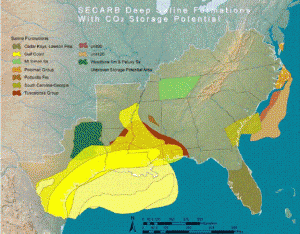This commentary was originally posted on the EDF Texas Clean Air Matters Blog.
It seems like only yesterday that ERCOT was issuing dire warnings of rolling blackouts as a direct result of regulations required by the court system to ensure cleaner, healthy air for Texans and our neighboring states. Well, maybe not yesterday, but at least as recently as this month. Buried deep within the report was ERCOT’s tacit acknowledgement that they have allowed companies to idle more than 1,000 MW of power plants because those plants are not economic in today’s hyper-competitive market.
Of course, no announcement made as much news as Luminant’s claim that they were shutting down two of their Monticello lignite power plant units in response to EPA regulations. Those claims have been pretty well debunked over the last few months as people began to realize that market economics and poor planning were responsible for Luminant’s decision. As we discussed in September, it was as convenient for Luminant to blame the EPA as it was reflexive of Texas politicians and regulators to threaten rolling blackouts as a result of Luminant’s decision. ERCOT’s decision to let other power plants shut down for economic reasons calls those claims into serious question, and their recent decision (password required) that idling the Monticello units at the heart of this debate does not threaten system reliability will hopefully end this cycle of unfounded recrimination and backtracking.
As ERCOT has made clear, the real threats to system reliability are of our own making: market failures have lead to a lack of proper signals to encourage the building of new power capacity; and this year’s record breaking drought, made more extreme by climate change, has threatened to shut down more than 11,000 MW of power plants. What all of this means is that ERCOT’s reliability issues are far more complicated than a political slogan, and getting rid of sensible regulations that protect our children, elderly and general population from real health risks will do nothing to solve our problems.
Instead of focusing on the easy political score, our leaders should be looking for real solutions that don’t pose risks to human health or to our water supply. The solutions are out there: dry-cooled power plants, energy efficiency programs like demand response, as well as wind, solar and other non-water consuming renewable energy.
The most recent decision by ERCOT that idling Luminant’s power plants poses no threat to grid reliability should end the cycle of unfounded accusations for political gain. It should focus our state leadership on solutions that will work instead of distractions that only delay solving the problem. It should also serve as a signal to those who are all too ready to accept unfounded claims for the sake of a good story or a convenient target. When it comes to ERCOT and reliability, the issues are complicated, but the solutions are out there and it will take real focus and effort to prevent Texas from experiencing the same rolling blackouts we had last winter. It’s winter again (even if it’s just barely starting to feel like it), and next summer looks to be another scorcher. We don’t have a lot of time, so let’s get to work.















